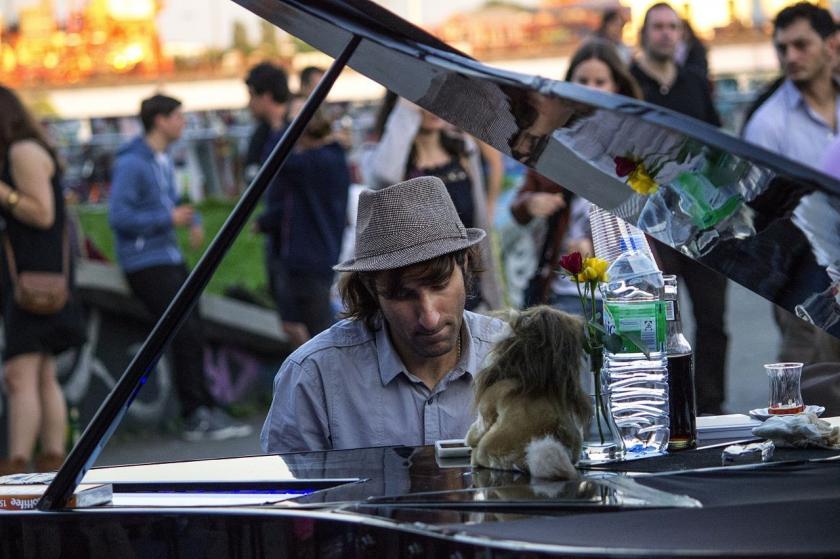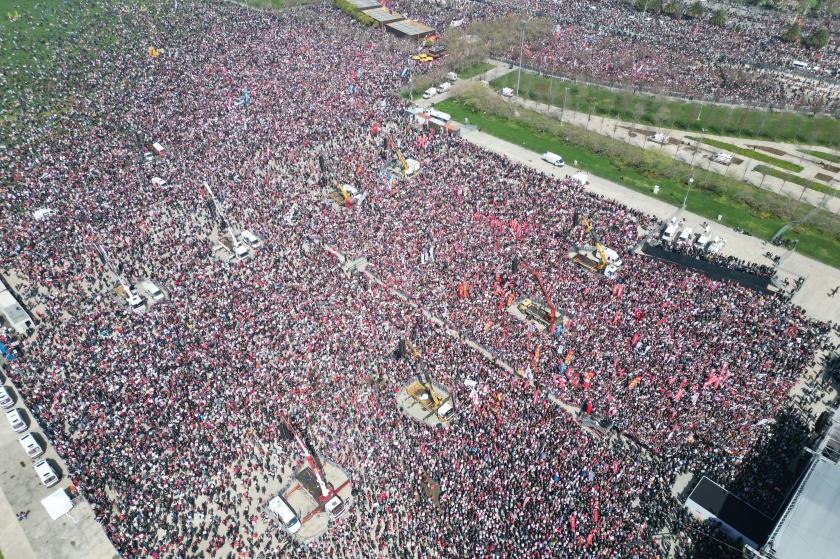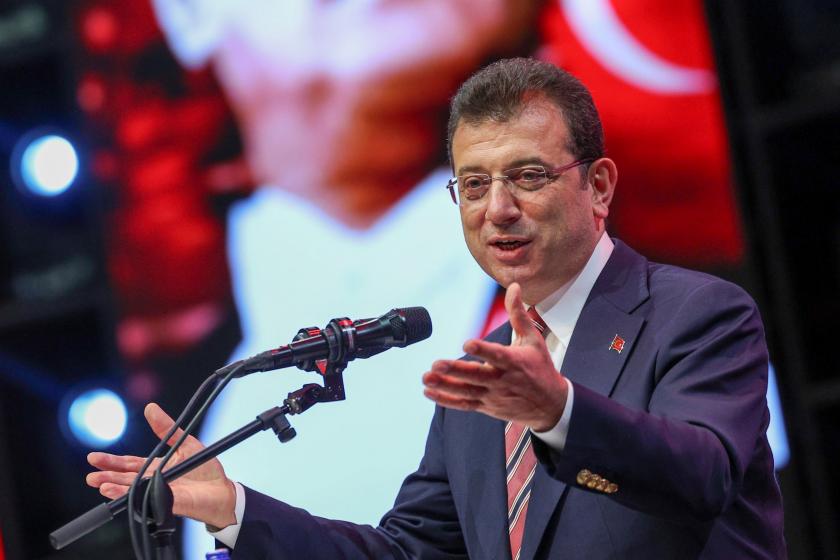Youth, political cartels and elections

M. Sinan Birdal

Fotoğraf: Lokman Vural Elibol/AA
As the US presidential election approaches in November, a sense of panic is gripping the ruling Democratic Party. President Joe Biden's performance in the televised debate with his opponent Trump has heightened concerns about the president's advanced age. These concerns are not unfounded, but the reactions suggesting that Biden has aged forty years overnight are puzzling. After all, the president has been showing signs of ageing for a long time. So the sudden focus on age after the televised event seems more related to the underlying unease within the Democratic Party. I doubt that age is the real issue here.
Historically, securing the youth vote has been crucial to Biden's electoral success. In 2020, the turnout of young voters was crucial to the outcome. This year, however, a chill wind is blowing from the youth. As Politico's April assessment put it:
"Something strange is happening behind the general stability of the early 2024 polls; it's either a sign of a major realignment, or the polls are wrong again. According to the polls, former President Trump is surging among the youngest segment of voters, even leading Biden in some polls, with younger people who are less interested in politics vehemently rejecting Biden."
According to an April commentary in the Harvard Gazette, "Young voters still lean towards Biden, but the situation is complicated" because young people are very volatile due to their concerns about the future. In late June, The Economist asks: "Young voters overwhelmingly favour Biden, but will they turn out?" and continues: "Biden is struggling to get his message across, having taken a hit from campus protesters over Gaza". Viewing young voters as a monolithic bloc is misleading. Moreover, we need to look closely at the situation in closely contested states to assess the impact on election results. However, it seems that we are facing an election that will be discussed for a long time and will have serious consequences. Analysing the younger generation's relationship with political parties solely through voting overlooks their role in the functioning of a party and thus the impact of the existing party structure on the political system.
The question "Couldn't the political parties find candidates other than 78-year-old Trump and 81-year-old Biden?" is significant. Of course, it's also intriguing to ask why people of these ages are running and being nominated for the presidency. The answers to both questions should be sought in the structural features of the political system rather than in subjective intentions and desires. The current political party structure does not produce new leaders. This is a product of the oligarchic cartelization within the parties and their organised social relations. We know very well from our country's history that "service politics", where parties market a brand rather than a programme and voters become clients, is actually managed by CEO-like leaders who dominate the corporate party board. This trend towards cartelization and monopolization leads to an unprecedented concentration and centralisation of power, while undermining the potential of parties to train politicians and leaders. In this context, the relationship between parties and young people is also changing.
Parties have always existed to the extent that they were able to recruit young people into their ranks. A party with a dwindling number of young members is doomed to disappear. Moreover, it is young people who run the election campaigns of any party. Mobilizing young people to go door to door, street to street, handing out leaflets, putting up posters and making announcements is essential to a party's success. In recent election campaigns from the US to Europe to Turkey, the failure of mainstream parties to mobilise young people has emerged as a secular trend. In Germany, the SPD and the Greens faced a backlash after issuing ultimatums to their youth wings. As long as party leaderships refuse to face up to this reality (and resign), the bleeding will continue. After the last European elections, comments about young voters almost exactly mirrored general election comments in Turkey: "Young people are on TikTok!" Subsequently, comments about Generation Z were almost verbatim translations of those in Turkey. Political assessments and reactions about young people have become so widespread that they are now the subject of research for young political anthropologists, but the political establishment, from right to left, is struggling to see itself reflected in these unchanging gerontocratic clichés.
The problem is not TikTok, but the dysfunction of the mainstream media, carefully nurtured and grown over years by centrist politics. The problem is not the habits or tendencies of modern young people, but a system that excludes them from the political process and sees them as mere order followers. Ultimately, the problem lies with a power structure that is determined to defend an outdated status quo to its grave. Fear is of no use against death, but it can do considerable damage after death. Since the centrist policies that oppress young dissidents also pave the way for the right in organising young people, while blocking left mobilisation, the way is wide open for fascist mobilisation. When the wages they earn after graduation are not enough to pay off their student loans, when secure and regular jobs (let alone buying a house) are a dream, when police patrol campuses, we'll see what Biden's forgiveness of interest on student debt will get him in November.






Follow Evrensel